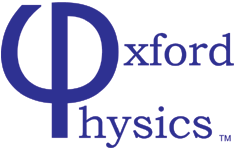
STATISTICAL PHYSICS
PAPER A1, SECOND YEAR
| Maxwell's
demon (drawing by G. Gamow) |
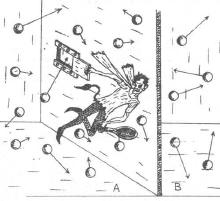 |
To play the good family
doctor who warns about reading something prematurely,
simply because it would be premature for him his whole
life long---I'm not the man for that. And I find
nothing more tactless and brutal than constantly
trying to nail talented youth down to its
"immaturity", with every other sentence a "that's
nothing for you yet". Let him be the judge of that!
Let him keep an eye out for how he manages.
Thomas Mann, Doctor Faustus |
Prof Alexander Schekochihin and Prof Andrew Steane
ALEX SCHEKOCHIHIN'S LECTURE NOTES:
The current version (4.11.2022) of the pdf file containing the typed version is linked here.
This file is being edited/corrected/amended as we proceed.
I will be very grateful for your feedback: comments, error corrections, views etc.
Canvas page for the course
(this is currently the same as it was in 2022-23 but also includes the 2021-22 version of the course)
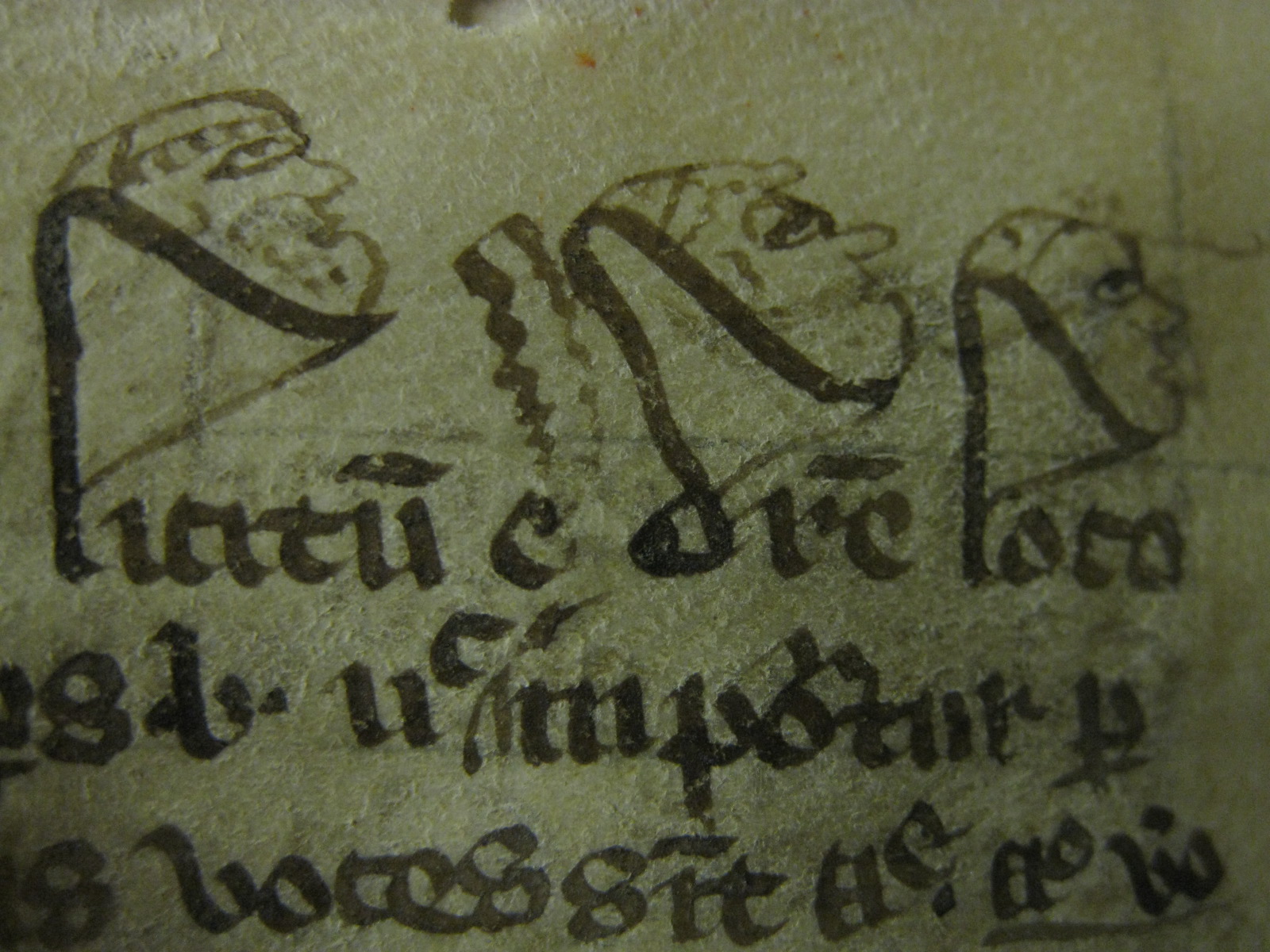 A sketch of students (or, perhaps, fellows) in a manuscript of William of Ockham's commentary on Aristotle's Physics (MS293 from the Merton College library, image courtesy of J. Walwarth). |
Michaelmas Term 2023 (skip to HT) (skip to TT Revision Lectures) ESSENTIAL DOWNLOADS:
What appears below will initially be information from the time when I last taught this course, MT-2022. I will update this page as we go along, so check back from time to time! NB:
The
reading suggestions are only suggestions --- the way
material is presented in those sources is not always
identical to our exposition. See Reading
List for full book titles and publication
info.
|
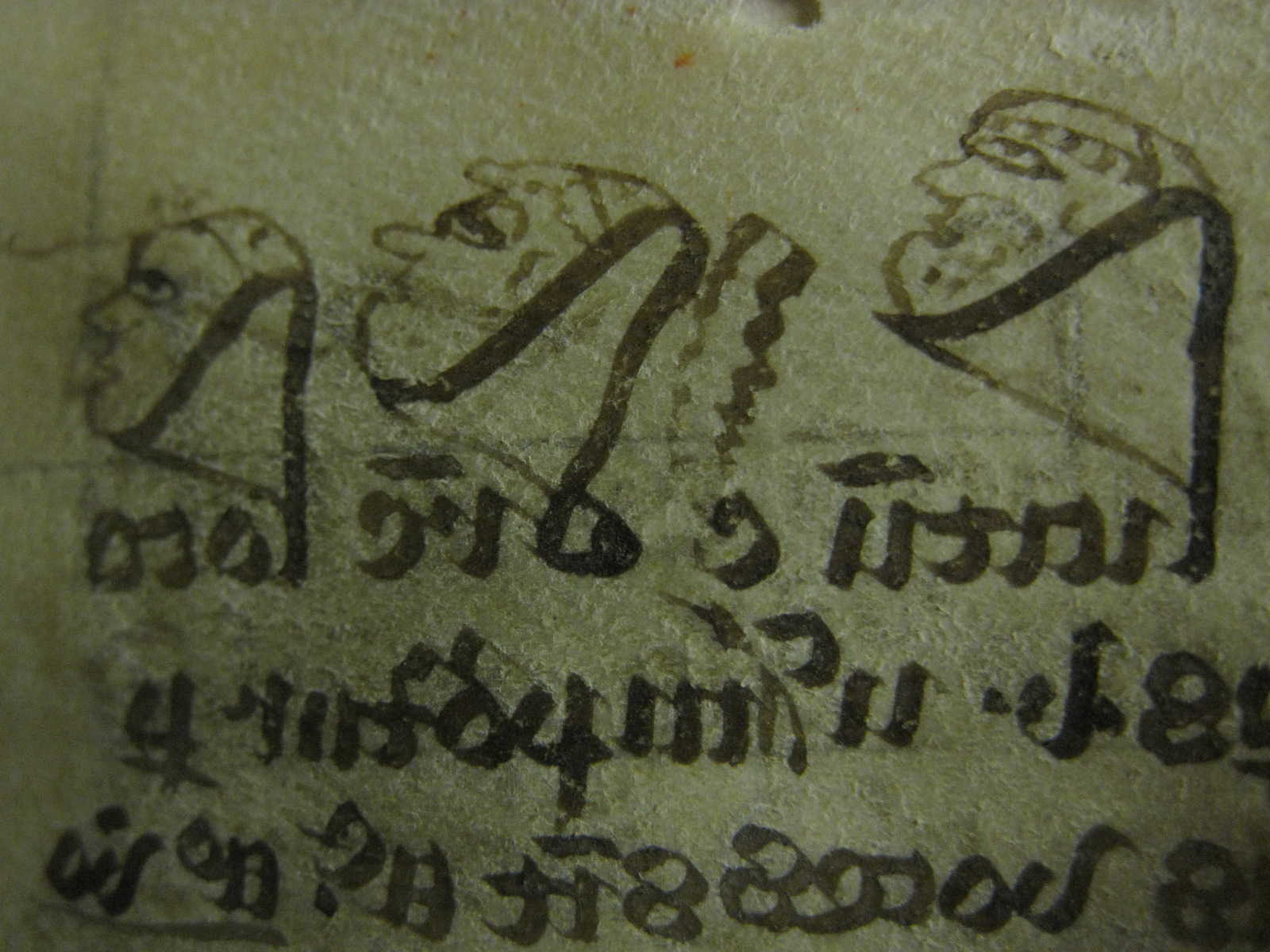 A sketch of students (or, perhaps, fellows) in a manuscript of William of Ockham's commentary on Aristotle's Physics (MS293 from the Merton College library, image courtesy of J. Walwarth). |
|
| PART
I: BASIC THERMODYNAMICS |
Lectures
1-7 will be given by Prof Andrew Steane: see
his teaching site for lecture notes etc. |
||
| You are ready to do A. Steane's Problem Sets 1-3
or last year's Problem Sets 1-2 |
|||
| PART
II: KINETIC THEORY |
Lecture 1 (12:00 Wed 15.11.23)
Statistical description of a gas. Energy.
Thermodynamic limit.
Kinetic calculation of pressure.
Reading: Lecture Notes Sec 1.1-1.4 Blundell Sec 3 (a primer on probability), 6.1 (pressure) Kardar Chapter 2 (a more advanced primer on probability) Pauli Sec 24 (pressure) Chapman & Cowling Chapters 2, 4 (much more advanced treatment) Note:
Please make sure you have a practical command of
the notions from probability theory that I am
using: random variables, their averages (means),
probability density function, joint
distribution, indeoendent random variables,
change of variables for pdfs. This may require
reading a book! (for example Sinai's book
suggested in the right column) It is better to
sort this out in your mind early, otherwise
initial confusion will fester and undermine you
ability to follow the rest of the course.
|
Related
mathematics: Probability and Statistics by S. Biller A superb (mathematical but accessible) course on probability theory: Ya. G. Sinai, Probability Theory: An Introductory Course An unorthodox but fascinating book on probability: E. T. Jaynes, Probability Theory: The Logic of Science (CUP 2004) A philosophical treatment of what it all means by a thinker now very much back in fashion: J. M. Keynes, A Treatise on Probability (1920, reprinted 2008) |
|
|
Lecture
2 (12:00
Thu 16.11.23) Kinetic calculation of pressure
cont'd. Particle distribution functions. Pressure vs.
energy.
Isotropic distributions. Classical ideal gas. Maxwell's
distribution.
Reading: Lecture Notes Sec 1.4-2.1 Blundell Sec 5 Pauli Sec 25 Chapman & Cowling Chapters 2, 4 (much more advanced treatment) |
|||
|
Lecture 3 (12:00 Fri 17.11.23) Maxwell's
distribution cont'd. Equation of state and
temperature; heat capacity of monatomic ideal gas.
Effusion. Collisions.
Reading: Lecture Notes Sec
2.1-2.2, 3
Blundell Sec 7 (effusion) Pauli Sec 28 (effusion) |
|||
| You are ready to do Problem Set 3 | |||
|
Lecture 4 (12:00 Wed 22.11.23) Collisions.
Inhomogeneous pdfs. Local Maxwellian equilibrium.
Reading: Lecture Notes Sec 4,
5.1-5.2
Blundell Sec 8 (collisions) Pauli Sec 26 (collisions) Chapman & Cowling Chapter 5 (much more advanced treatment) |
A
treatment of collisions (and derivation of Maxwell'sdistribution) from the original source: L. Boltzmann, Lectures on Gas Theory (Dover 1995) |
||
|
Lecture 5 (12:00 Thu 23.11.23)
Evolution of temperature and flow velocity from
conservation laws. Thermal conductivity. Viscosity.
Relaxation to global equilibrium. Green's function
for diffusion equation. Dimensional estimates of the
thermal conductivity and viscosity. Separation of
scales between local and global relaxation.
Reading:
Lecture Notes Sec 5.3-5.6.3, 5.7.3Blundell Sec 10 Key thought
#1: All diffusion processes are similar
(diffusion of particles, momentum, energy...).
Key thought #2: Relaxation to equilibrium occurs in two stages: first to local equilibrium (on collision time scale, so very quickly), then to global equilibrium (diffusively, so slowly) --- both processes are collisional, but different in speed and in the nature of the physics involved. Key thought #3: Transport equations are expressions of conservation laws. We use kinetic theory to calculate the fluxes of the conserved quantities (particle number, momentum, energy). Note: Methods to solve the heat diffusion equation were covered in Mathematical Methods. There are some questions on this in Problem Set. Do go back and brush up your understanding of (i) how to find steady solutions given appropriate boundary conditions (temperature or heat flux on two boundaries), (ii) how to find time-dependent solutions given periodic boundary conditions (real frequencies, complex wavenumbers), (iii) how to find time-dependent solutions given initial conditions (real wavenumbers, complex frequencies) [see my typed notes, Secs 5.6.6 and 5.7.3 or Blundell Sec 10 and Appendix C.12.]. |
Here
are some notes on dimensional analysis (from a summer school in Oxford), with an elementary treatment of a fun example of the role of viscosity: how do bubbles rise in a fluid? On diffusion, learn from the master: A. Einstein, Investigations on the Theory of the Brownian Movement (Dover 1956) [the theory of Brownian motion will be taught in the 3rd year, paper BI, but there's nothing there that you can't understand now; see also Blundell Sec 33.1] |
||
| You are ready to start working on Problem Set 4 (vacation work) | |||
| Lecture 6 (12:00 Fri 24.11.23) Transport
equations
with sources and sinks; stationary solutions for
boundary-value problems. Kinetic derivation of the
transport equations and transport coefficients (thermal
conductivity and viscosity): the simplified "dodgy"
derivation and its critique. Reading: Lecture Notes Sec 5.6.4-6.1 Blundell Sec 9 (the simplified derivation); Pauli Sec 27 (another version of this) |
|||
| Lecture 7 (11:00 Thu 30.11.23) Kinetic
expressions
for fluxes. Kinetic equation. Local conservation laws
rederived: continuity and momentum equations. Reading: Lecture Notes Sec
6.2-6.4.2
Kardar Chapter 3 (more advanced than my treatment, includes general derivation of Boltzmann's equation and various attendant matters, in particular H theorem; treatment of fluid equations similar to mine); Kittel Sec 40, 43; Landau & Lifshitz-Kinetics Chapter 1 (hard-core Russian treatment); Chapman & Cowling Chapters 3, 6, 7, 9, 10 (hard-core Cambridge treatment) |
|||
| Lecture 8 (12:00 Thu 30.11.23) Local
conservation
laws cont'd: energy equation. Collision operator.
Solution of the kinetic equation. Reading: Lecture Notes Sec
6.4.3-6.6
see also readings for Lecture 7 |
Make-up
lecture for the unfortunate mix-up on Wednesday (apologies!) |
||
| Lecture 9 (11:00 Fri 1.12.23) Solution
of the kinetic equation cont'd. Calculation of
fluxes. Reading: Lecture Notes Sec
6.6-6.7
see also readings for Lecture 7 What I have
shown you is a very simplified version of this
calculation. Do read more advanced texts and find
out how it is really
done! Sec 6.8 gives you some idea. Sec 6.9 is
an extracurricucular treatment of the kinetics of
"Brownian praticles" --- a neat illustration of how
to set up kinetic theory for another example of a
particle system (slightly different from ideal gas).
In this example, I actually show how to derive an
explicit collision operator and what to do with it.
|
If
you liked Kinetic Theory and can't wait till MMathPhys to learn more, click here. |
||
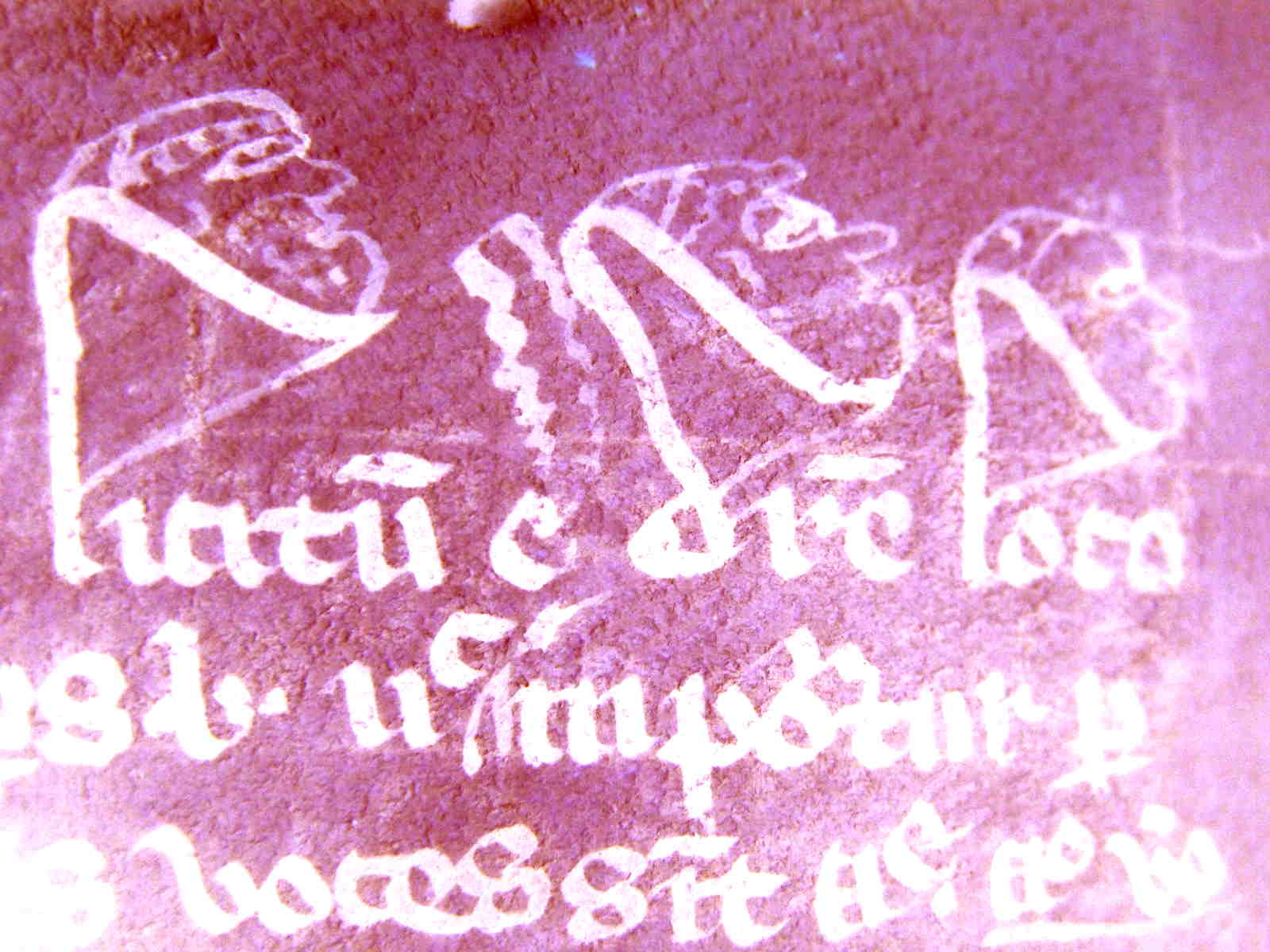 |
Hilary Term 2024 ESSENTIAL DOWNLOADS: Reading List
LECTURES |
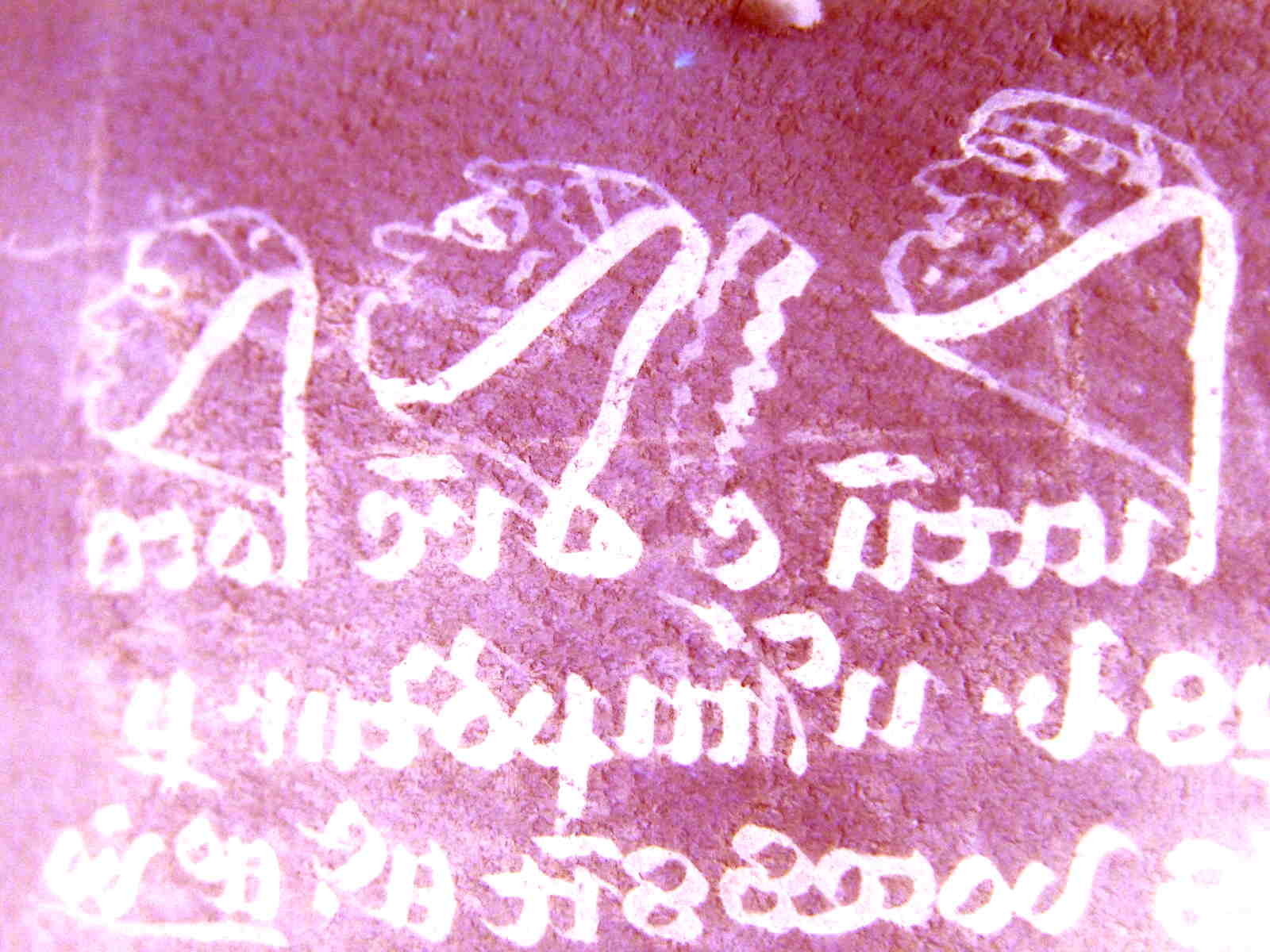 |
|
| PART III: FOUNDATIONS OF STATISTICAL MECHANICS |
Lecture 1 (11:00 Wed 17.01.24)
Our programme: from microphysics to macrophysics (what
we need to do to construct the thermodynamics of a given
system). Micorostates. SM definition of pressure.
Principle of maximum entropy. Reading: Lecture Notes Sec 7.1-8.1.3 Binney Notes Sec 1 Schroedinger Chapter 1-2 Jaynes Sec 11.4 (assigning probabilities fairly) Blundell Sec 14.8, 15.1-15.2 (entropy, probability, information), App C.3 (Stirling's formula) My account
of the principle of maximum entropy and
subsequent developments (continued in the next
lecture) owes most to J. Binney's notes,
Schroedinger's book and Jaynes' book and papers.
This is not necessarily the standard approach
and I invite you to read other books on the
subject and form your own view of what makes
sense. There will be more discussion of the
conceptual issues underpinning this approach in
later lectures (see Lecture Notes Sec 12).
To avoid one particular confusion arising (which I detected in some after-lecture questions today), let me reiterate my attitude to the equal a priori probabilities principle. The fact that it has this grand name might have suggested that it would be the foundation of what follows. In fact, I only mentioned it as a particularly simple example of a fair assignment of probabilities. In practice, we will have no use for completely isolated systems, about which we are 100% ignorant, but instead focus on systems for which at least some mean quantities can be known (measured). The statistical inferences we will make about such systems will be based on the principle of maximum entropy. This approach belongs to the Gibbs-Shannon ("canonical") family of treatments, rather than the Boltzmann one ("microcanonical"). A logic chart of both is in Lecture Notes Sec 12.2, where I will discuss in great detail how various constructions of Statistical Mechanics compare. |
RECOMMENDED: James Binney's 2002 lecture notes on Statistical Mechanics E. T. Jaynes, Probability Theory: The Logic of Science (CUP 2004) C. Shannon's original paper: Bell System Tech. J. 27, 379 (1948) (the first in the linked issue). Also you might enjoy reading this: E. T. Jaynes, "Information Theory and Statistical Mechanics," Phys. Rev. 106, 620 (1957) On adiabatic processes (and pressure), see Binney & Skinner, Quantum Mechanics, sec 11.1-3 A very nice and readable book: I. Ford, Statistical Physics: An Entropic Approach (Wiley 2013) ...although he prefers starting with the Boltzmannite microcanonical formulation, like most texts --- so I continue to recommend Schroedinger's lectures as primary reading Another very good read is J. P. Sethna, Statistical Mechanics: Entropy, Order Parameters, and Complexity (OUP 2006), where you will find a great number of cool and modern examples |
|
| Lecture 2 (12:00 Wed 17.01.24) Principle
of maximum entropy cont'd. Method of Lagrange
multipliers. Canonical ensemble: Gibbs distribution.
Reading: Lecture Notes Sec
8.1.4-9.1
Binney Notes Sec 3.0 Schroedinger Chapter 2-3 Blundell App C.13 (Lagrange multipliers), Example 14.7 (Gibbs) Binney Notes Sec 2 (Shannon's theorem) Shannon's paper Sec 6 and App 2 Jaynes Sec 11.3 (Shannon's theorem) Note that in
order for the results derived from the maximum
entropy principle to be useful, the maximum must
be quite sharp and the resulting distributions
should not have too much variance (fluctuations
around the mean values should be small). All
this can be quite rigorously demonstrated for
large systems and is basically related to the
quality of the "thermodynamic limit." You will
find these discussions in Schroedinger Chapters
V-VI and some further relevant maths in Jaynes
Sec 11.7.
A perceptive student might wonder whether entropy is a human construct. Basically, yes, it is a measure of uncertainty that helps us make the best (unbiased) statistical inference about the state of a largely unknown system. I will discuss this issue a lot more in Lectures 6-7 (but no one stops you thinking about it until then.) |
|||
| Lecture 3 (12:00 Thu 18.01.24)
Construction of thermodynamics. Additivity of entropy.
Thermal equilibrium and the validity of the SM
definition of temperature. Heat bath and the physical
interpretation of the canonical ensemble.
Reading: Lecture Notes 9.2, 9.5, 10.1-10.3 Schroedinger Chapter 2-3 Blundell Sec 20 (from partition function to thermodynamics) Binney Notes Sec 3.0.3 (composite systems) |
On
composite systems in QM, see Binney & Skinner, Quantum Mechanics, sec 6.1 If you want some intellectual stimulation of an abstract kind, see what mathematicians can do to thermodynamics: axiomatic thermodynamics by E. Lieb & J. Yngvason, Physics Reports 310, 1 (1999) (open at your own risk; you have to be over the age of consent!) An older account of Caratheodory's axiomatic thermodynamics is in Pauli Sec 11 |
||
| Lecture 4 (12:00 Fri 19.01.24)
Mechanical and dynamical equilibria. Stability of
equilibria. Positivity of temperature and pressure.
Reading: Lecture Notes 10.4-10.5 Landau & Lifshitz Sec 10 (dynamical equlibria), 12 (pressure equilbrium) Best way to understand the stability arguments is to think about cases when the conclusions don't apply. For example, Problem Set 5 contains some examples of negative temperatures: why are negative tempeartures possible there despite my arguments to the contrary in today's lecture? |
Here's
an interesting recent take on the issue of negative temperatures: J. Dunkel & S. Hilbert, Nature Phys. 10, 67 (2014) and a "popular" recap of their article: I. M. Sokolov, Nature Phys. 10, 7 (2014) (note that what these people mean by "Gibbs entropy" is not the same thing as our "Gibbs-Shannon entropy") |
||
| Lecture 5 (12:00 Wed 24.01.24) SM of
classical monatomic ideal gas. Reading: Lecture Notes 11.1-11.9 Blundell Sec 21.1-21.5 |
|||
| Lecture 6 (12:00 Thu 25.01.24) SM of
classical monatomic ideal gas cont'd. Thermodynamics of
ideal gas. Reading: see above (on ideal
gas)
Lecture Notes 12.1.1-12.1.2 see readings below We have now
encountered three sets of definitions of
temperature and pressure, viz., thermodynamical,
kinetic and statistical-mechanical, and proved
they are all equivalent. Ponder how this worked
and see if you really understand the logic
involved. This is a good way to revise.
|
|||
| You are ready to start working on Problem Set 5 | |||
| Lecture 7 (12:00 Fri 26.01.24) Boltzmann
entropy. Microcanonical vs. canonical ensemble.
Boltzmann vs. Gibbs. Meaning of probabilities. Second
law and the loss of information. Reading: Lecture Notes 12.1.1,12.1.2,12.2-12.4 Schroedinger Sec 1-2 Blundell Sec 4.4-4.6 (from microcanonical to canonical) Kardar Sec 4.2, 4.6 (from microcanonical to canonical) Binney Notes Sec 5.0 Jaynes Sec 11.8 (meaning of probabilities, extra constraints etc.) Landau & Lifshitz Sec 3, 4, 7, 8 (microcanonical approach) I mentioned
the intriguing concept of the "thermal death of
the Universe" possibly without sufficient
explanation. The idea is that if the entropy of
the Universe keeps increasing, we are moving
towards an eventual state where it is globally
maximal and so there are no gradients of any
kind --- it all ends up in the ultimate boring
state of deadly homogeneity --- which means,
sadly for us, that no structures and so no life
can survive. This realisation, the (possibly
apocryphal) story goes, caused Boltzmann great
distress and ultimately led to his suicide. In
contrast, Schroedinger, whose understanding of
statistical mechanics was (as evidenced by his
book) deeper and more compelling than
Boltzmann's, was quite a positive fellow,
worried less about death, and indeed, among
other things, wrote a book "What is Life?" which
I highly recommend. He was also a Fellow of
Magdalen here in Oxford until his insistence on
having two wives became untenable and he moved
to catholic Ireland, which, interestingly,
proved more tolerant.
Subjectivity of the a priori probabilities: if two observers have different information, will they obtain different statistical mechanics and so different predictions? Does the heat capacity of a box of gas depend on who is looking?! I have provided some comments on this in my Lecture Notes 12.3 --- or you can read the discussion in Jaynes Sec 11.8. There is a question in PS-5 which provides an example of what happens when a superfluous constraint is imposed. There is (alas!) no time to cover the density matrix and the way information is lost from the quantum mechanical viewpoint (which may be how it's "really" lost). You will find a treatment of this in Lecture Notes 13 and recommended readings below. Reading: Lecture Notes 13 Binney & Skinner Sec 6.3-6.4 Blundell Sec 15.4 Landau & Lifshitz Sec 5-6 Kardar Sec 6.5 |
If
you are interested in the history of ideas, here's a good read about Einstein's struggles with entropy, probability and the second law: A. Pais, "Subtle is the Lord..." (OUP 1982) Ch. 4 Possibly the first paper that made the connection between entropy and information (and sucessfully exorcised Maxwell's demon): Leo Szilard, Z. Physik 53, 840 (1929) --- English translation in Behavioral Sci. 9, 301 (1964) Second Law: E. T. Jaynes, "Gibbs vs Boltzmann Entropies," Am. J. Phys. 33, 391 (1965) Entropy and thermodynamics from the QM perspective: E. T. Jaynes, "Information Theory and Statistical Mechanics II," Phys. Rev. 108, 171 (1957) |
||
| PART IV: STATISTICAL MECHANICS OF SIMPLE SYSTEMS |
Lectures
8-10 will be given by Prof Andrew Steane J.
Devriendt's lecture notes (2021)
|
||
| PART V: OPEN SYSTEMS |
Lecture 11 (12:00 Thu 8.02.24)
Grand canonical ensemble. Chemical potential.
Thermodynamics of open systems. Reading: Lecture Notes 14.1-14.2 Blundell Sec 22.1-4; Kittel Sec 14; Kardar Sec 4.9; Landau & Lifshitz Sec 35-36 Note that,
like temperature, the chemical potential can be
introduced purely thermodynamically (as energy
cost of adding particles to the system) and then
shown to be the same as the parameter that appears
in the grand canonical distribution. Also, instead
of maximising entropy, as I have done, one can
derive the grand canonical distribution from the
microcanonical isolated-system set up by
considering a small subsystem of the world
exchanging energy and particles with its
surroundings. This is how it is done in most
textbooks.
|
I
have added a fun exercise (Ex 14.7) to the Lecture Notes, on a kind of grand canonical approach to the statistical mechanics of black holes. It is based on the paper by G. Gour, Phys Rev. D 61, 021501(R) I have also included this exercise as a new optional vacation work question (R.7) in the updated Revision Problem Set, along with an opportunity to be creative about elastic chains (R.6). Note by the way an intriguing connexion between gravity and elasticity: E. Verlinde JHEP04(2011)029 |
|
| Lecture 12 (12:00 Fri 9.02.24)
Particle equilibrium. Chemical potential of a classical
ideal gas. Equilibria of systems in external fields. Reading:
Lecture
Notes 14.2-14.5
Blundell Sec 22.5-6; Kittel Sec 14, 15; Kardar Sec 4.9; Landau & Lifshitz Sec 24, 25 |
|||
| Lecture 13 (12:00 Wed 14.02.24) Chemical
potential and the Gibbs function. Multispecies
(multicomponent) systems: generalisation of the grand
canonical ensemble. Gibbs phase rule. Chemical
equilibrium. Law of mass action. Reading: Lecture Notes 14.6, 15.1-15.3 Blundell Sec 28.5, 22.8; Kittel Sec 16; Landau & Lifshitz Sec 101-102, 104-105 Another
interesting topic that involves the use of
chemical potential but that I have not covered is
the thermodynamics of solutions. Read Landau &
Lifshitz Chapter IX if you want to find out about
that (also see Blundell & Blundell Sec 22.9
about osmotic pressure).
|
The
ionisation-recombination
equilibrium (see Problem Set 6) has interesting applications to Early Universe ("the recombination epoch"). Here and here are some lecture notes (from the US) on this subject. |
||
PART VI: QUANTUM GASES |
Lecture 14 (12:00 Thu 15.02.24)
Law of mass action. Quantum gases. Pauli exclusion principle. Partition function for fermions and bosons. Occupation number statistics and resulting thermodynamics. Reading: Lecture Notes 15.4, 16.1-16.2 Blundell Chapter 29; Kardar Sec 7.1, 7.3; Landau & Lifshitz Sec 53, 54; Schroedinger Sec 8 |
||
| You are ready to do Problem Set 6 | |||
| Lecture 15 (12:00 Fri 16.02.24) Calculations
in
the continuous limit. Classical limit. Reading: Lecture Notes
16.3-16.4.6
Blundell Sec 30.1; Kardar Sec 7.4; Landau & Lifshitz Sec 56; Schroedinger Sec 8 |
|||
| Lecture 16 (12:00 Wed 21.02.24)
Degeneration. Degenerate Fermi gas. Fermi energy.
Thermodynamics of Fermi gas at T=0. Finite-temperature
corrections and heat capacity. Reading: Lectures Notes 16.5,
17
Blundell Sec 30.2; Kittel Sec 19-20; Kardar Sec 7.5; Landau & Lifshitz Sec 57,58; Schroedinger Sec 8(a) |
If
you want to learn more about the thermodynamics of high-density, high-mass systems (including stability of neutron stars, which you will encounter in Problem Set 7), see Landau Chapter XI. Chandrasekhar got the 1983 Nobel Prize for his theory of the structure and evolurion of stars. Here is his Nobel lecture on the subject. |
||
| Lecture 17 (12:00 Thu 22.02.24)
Degenerate Bose gas. Bose-Einstein condensation. Reading: Lecture Notes 18
Blundell Sec 30.3-4; Kittel Sec 21; Kardar Sec 7.6; Landau & Lifshitz Sec 62; Schroedinger Sec 8(b) From this
material, you can segue nicely to the theory of
thermal radiation: photons are simply
ultrarelativistic bosons with zero chemical
potential. All the necessary maths is already in
Q1 of your Problem Set 7.
|
2001 Nobel Prize ("for the achievement of Bose-Einstein condensation...") |
||
|
J.
Devriendt's lecture notes (2021)
|
|||
| You are ready to do Problem Set 7 | |||
| PART VII: THERMODYNAMICS OF REAL GASES |
Lectures 20-24 will
be given by Prof Andrew Steane J.
Devriendt's lecture notes (2021)
|
||
| You are ready to do Problem Set 8 (vacation work) |
|||
    |
Trinity Term 2023:
Revision Lectures Revision Lecture 1
(TBA, Prof Steane)
A. Boothroyd's revision handouts
(2015):
Revision questions Solutions to revision questions Strategy: Thermo Strategy: Stat Mech Revision Lectures 2-3 (TBA, Prof Schekochihin) I will discuss some topics from Kinetic Theory and Quantum Gases. In anticipation of the lecture, you might wish to look at the following questions from past papers (all June): 2013-Q6, Q10, 2012-Q10, 2010-Q4, 2006-Q7, 2005-Q7, 2003-Q8 There will (hopefully) be a Q&A session in the 2nd hour of the lecture. Revision Lecture Notes Notes on some past questions |
    |
|
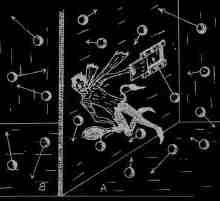 |
|||
READING LIST for A. Schekochihin's part of the course:
Basic undergraduate textbooks:
1. "Concepts in Thermal Physics," S. J. Blundell and K. M. Blundell (2nd edition, OUP 2009) --- the textbook on which this course was based up to 2011, excellent undergraduate intro to everything
2. "Elementary Statistical Physics," C. Kittel (Dover) --- classic undergraduate text from Berkeley
3. "Thermodynamics and the Kinetic Theory of Gases,’"W. Pauli (Volume 3 of Pauli Lectures on Physics, Dover 2003) --- undergraduate lectures by one of the greats
More advanced-level books:
4. "Statistical Thermodynamics," E. Schroedinger (Dover 1989) --- a beautiful and very concise treatment of the key topics in statistical mechanics, a bravura performance by a great theoretical physicist; may not be an easy undergraduate read, but well worth the effort!
5. "Statistical Physics, Part I," L. D. Landau and E. M. Lifshitz (3rd edition, Volume 5 of the Landau and Lifshitz Course of Theoretical Physics, Butterworth-Heinemann, 2000) --- the Bible of statistical physics for theoretically inclined minds
6. "Physical Kinetics," E. M. Lifshitz and L. P. Pitaevskii (Volume 10 of the Landau and Lifshitz Course of Theoretical Physics, Butterworth-Heinemann, 1999)
7. "The Mathematical Theory of Non-uniform Gases: An Account of the Kinetic Theory of Viscosity, Thermal Conduction and Diffusion in Gases," S. Chapman and T. G. Cowling (CUP 1991) --- the Cambridge Bible of kinetic theory, not a page-turner, but VERY thorough
8. "Statistical Physics of Particles," M. Kardar (CUP 2007) --- inspired modern textbook
Many further reading suggestions can be found in my lecture notes.